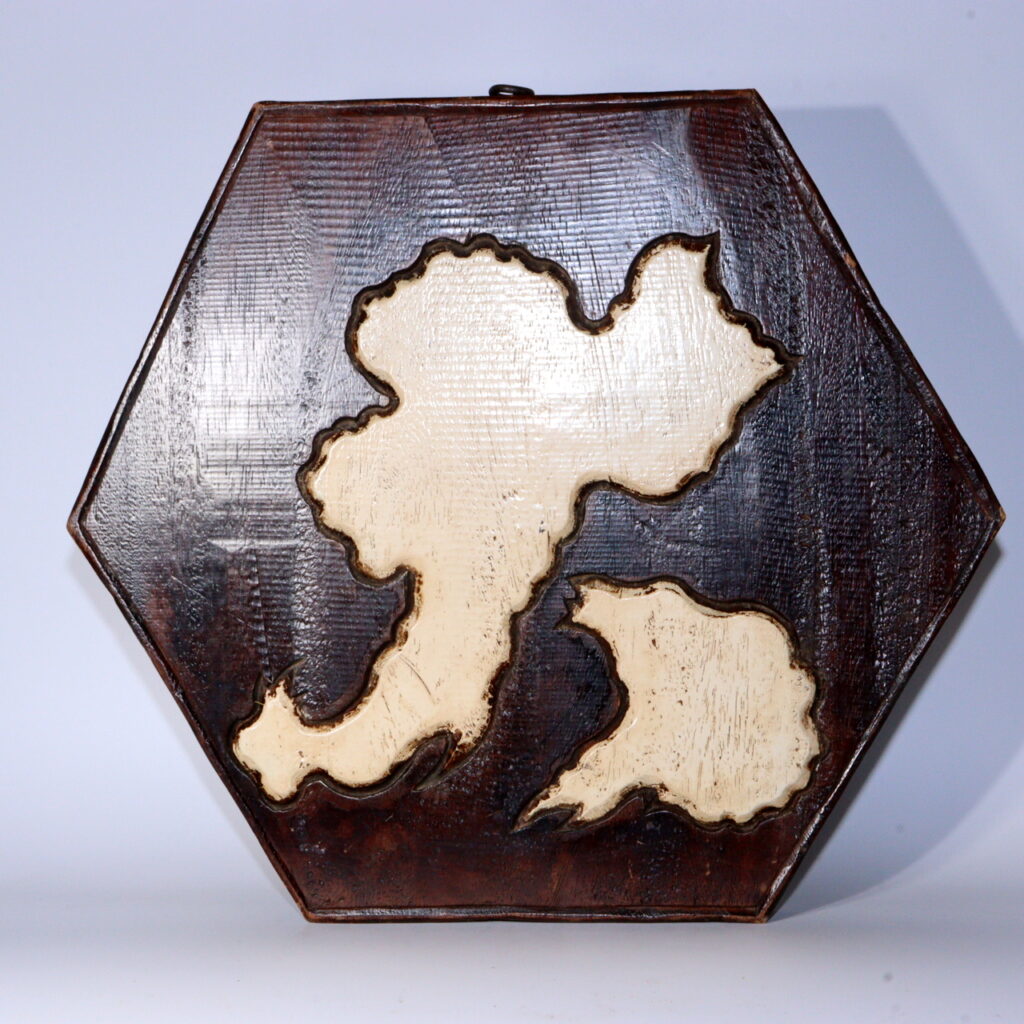

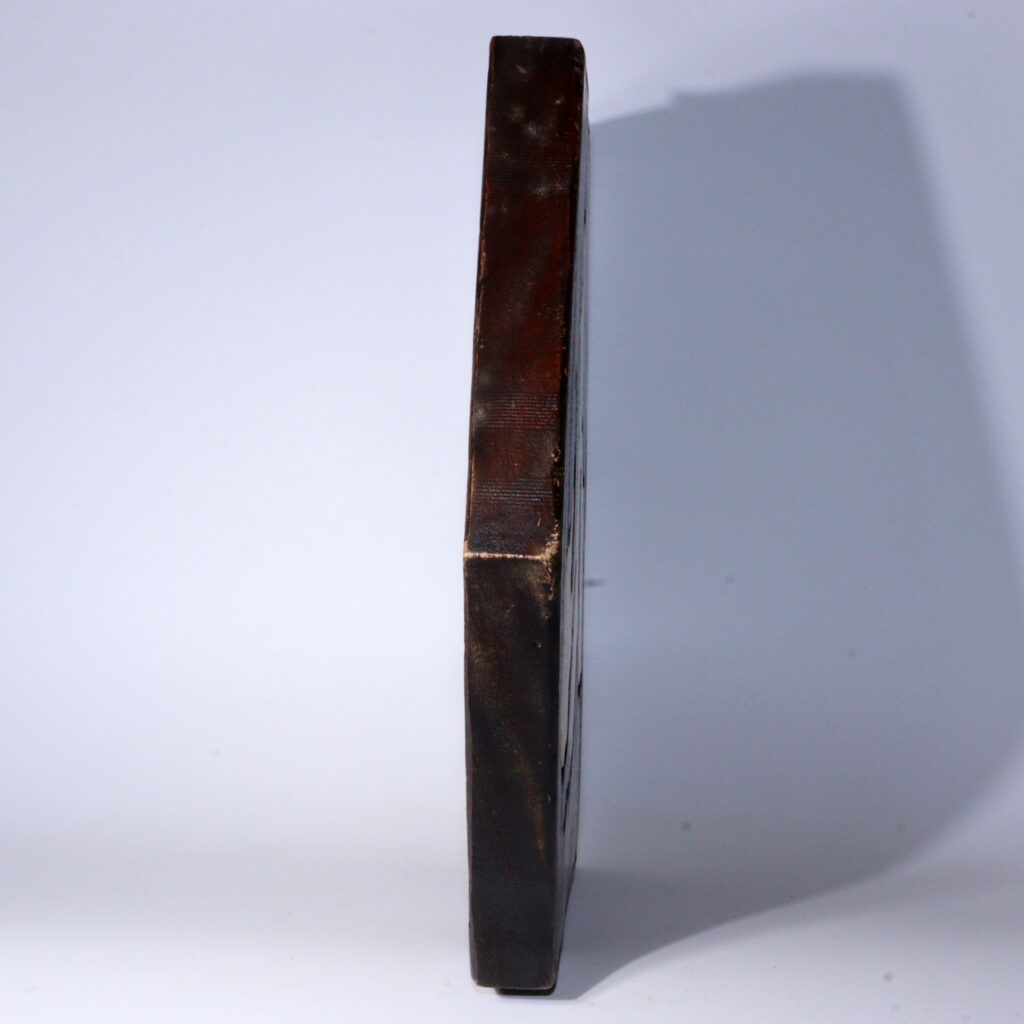
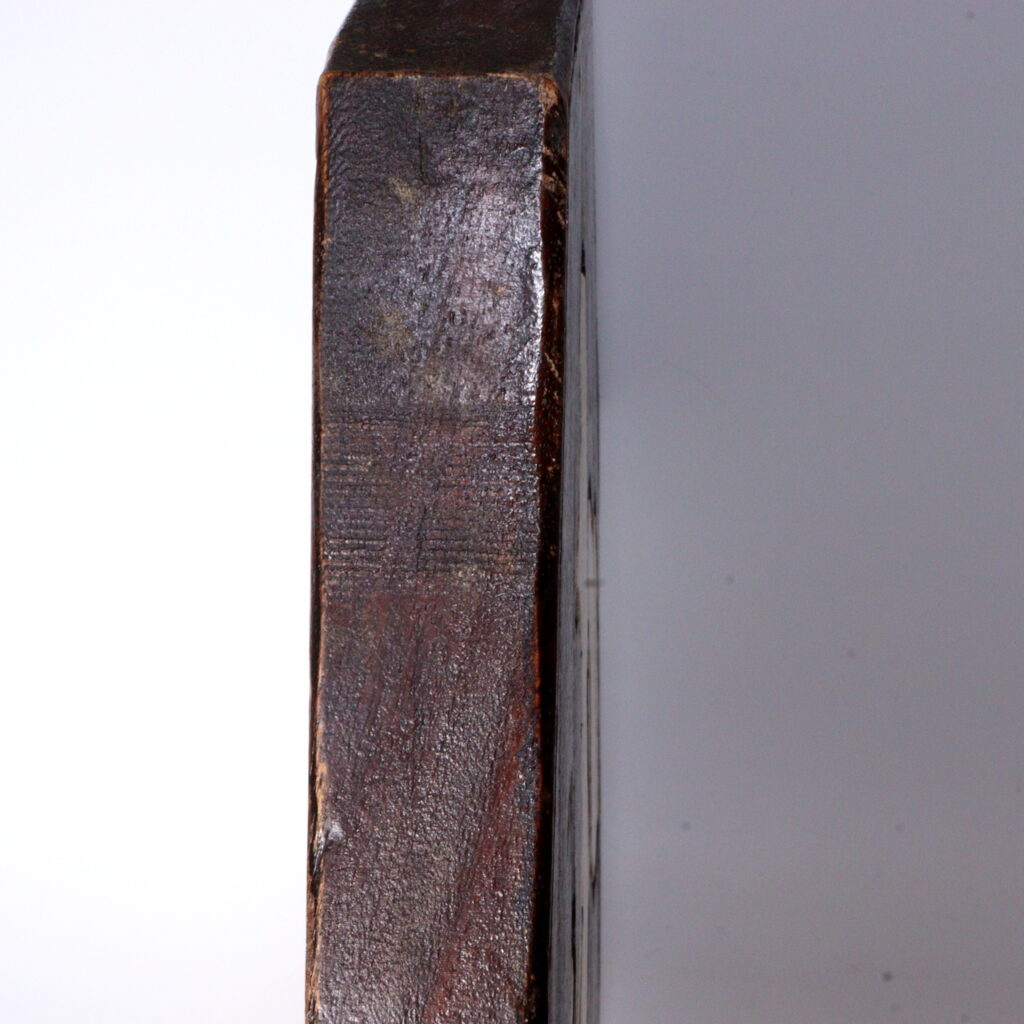
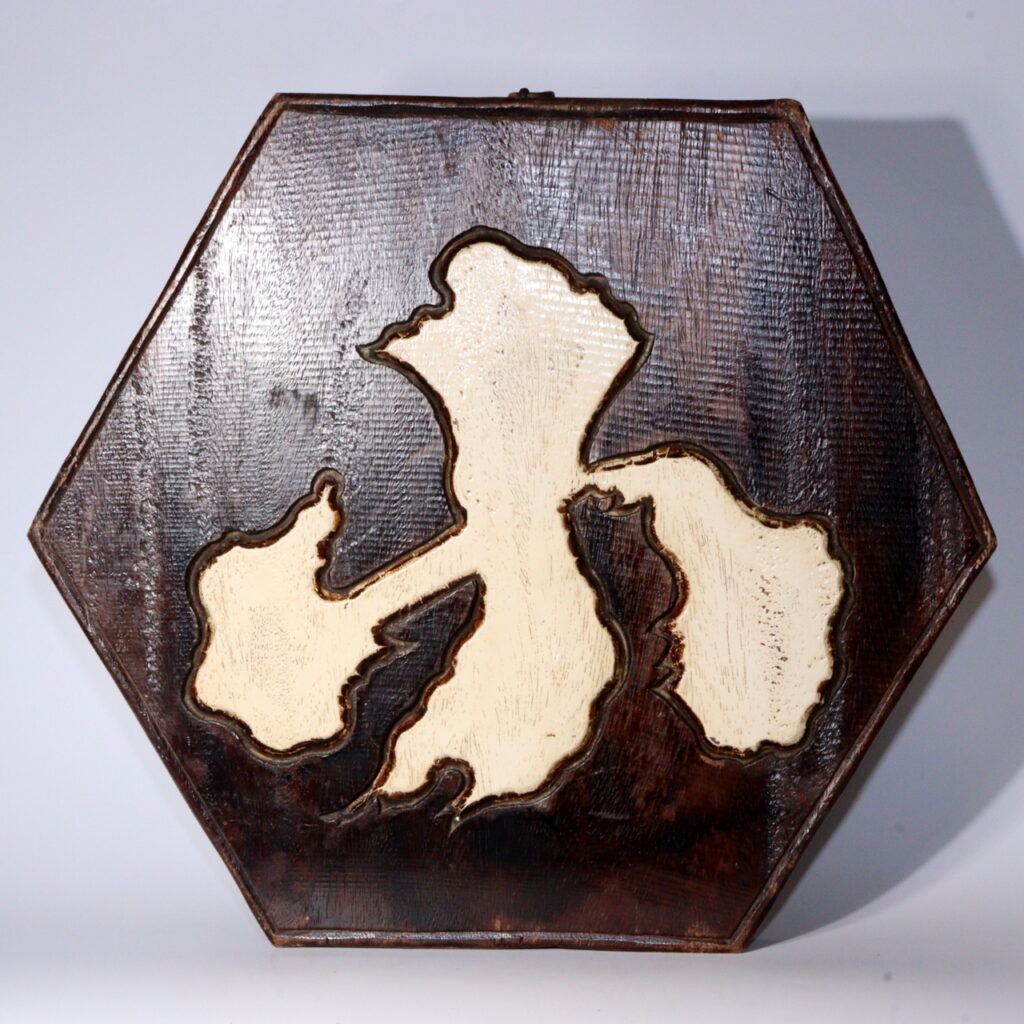
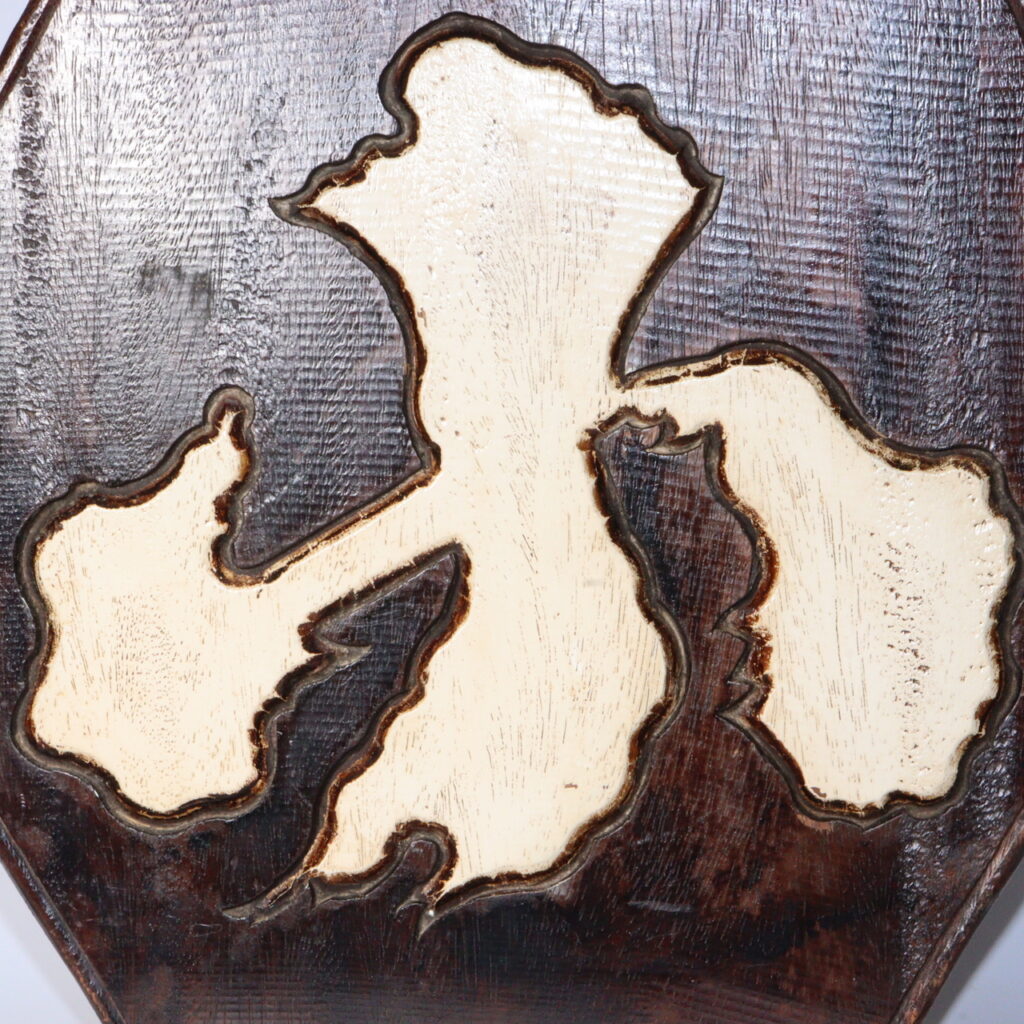
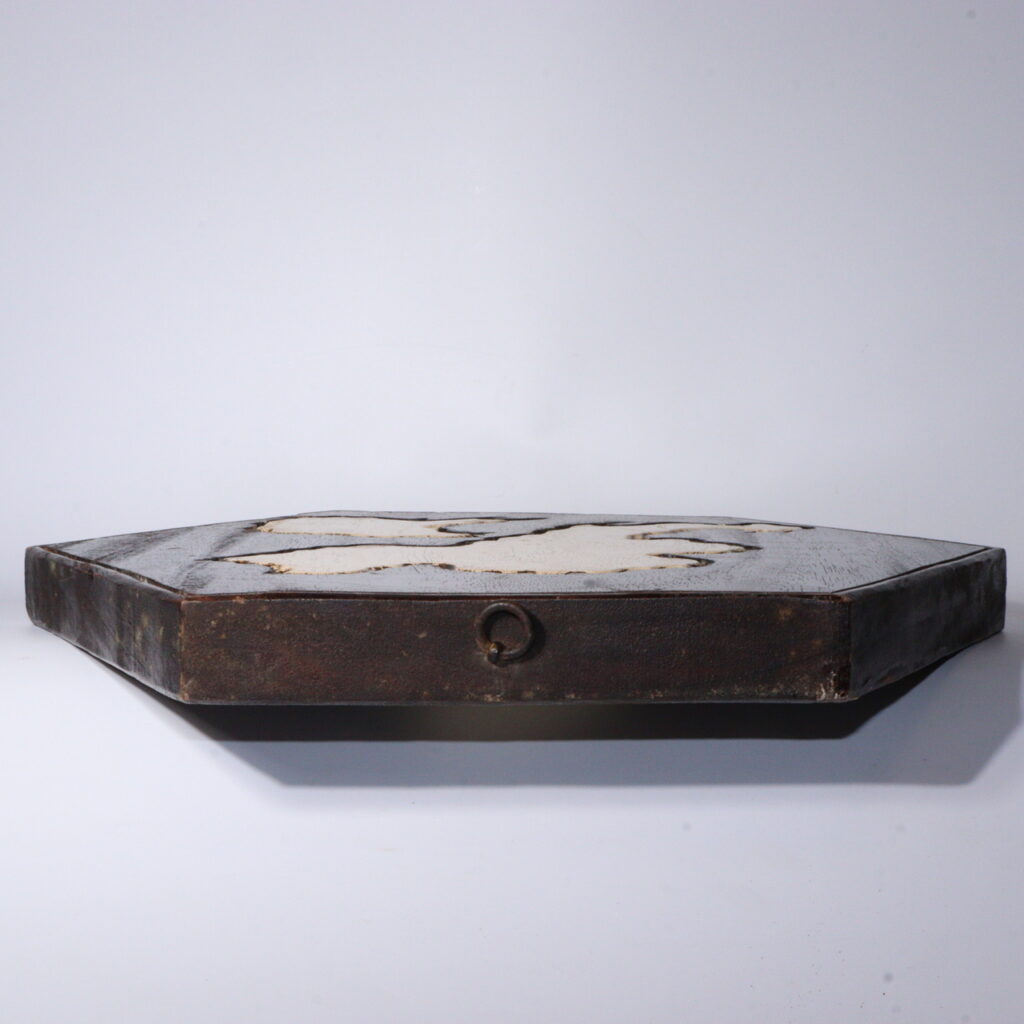
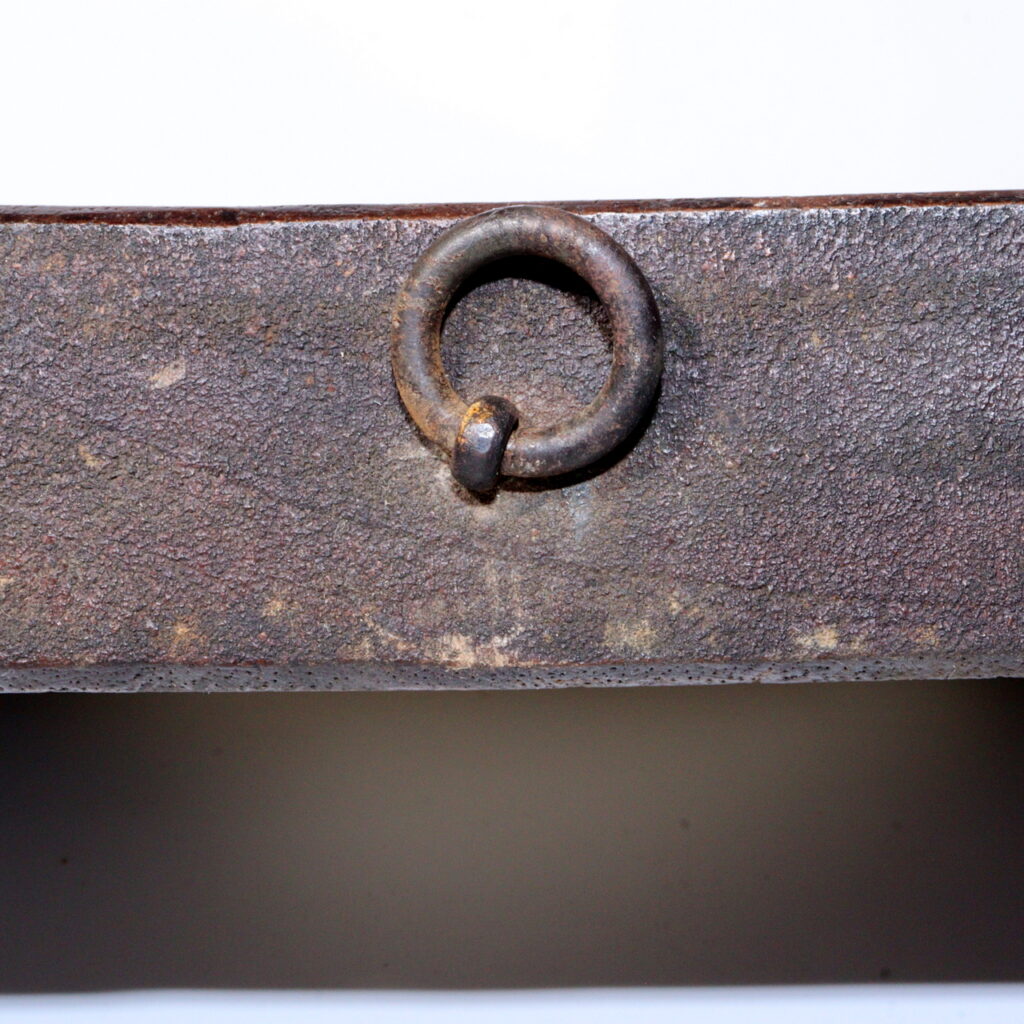
In the intricate world of Japanese antiques, even the most unassuming objects carry deep meaning and cultural heritage. This hexagonal wooden plaque carved from zelkova wood is a prime example—what appears to be a simple sign actually served as a vital accounting tool for merchants during Japan’s Edo period.
The Story Behind This Item
During the Edo period, commerce in Japan was largely credit-based. Customers often shopped on tab and paid their total balance either at the end of the month or even just once a year. With hundreds of transactions and multiple clients to track, accuracy was paramount for shopkeepers. That’s where this plaque played an essential role.
Each side of the plaque bears a large stylized kanji: one for “大” (large) and one for “小” (small). These correspond to the lunar calendar months—30 days for “large,” 29 days for “small.” It helped merchants remember whether that particular month was long or short, thus avoiding costly errors in bookkeeping.
It would have been hung near the accounting or storage area, silently marking time with remarkable precision and elegance.
Highlights and Unique Features
- Authentic Edo-period merchant tool, reflecting daily business culture
- Made from solid zelkova wood, a material prized in Japan for its durability and beautiful grain
- Hexagonal shape with thick edges and bold carved characters
- Front and back feature kanji “大” (large) and “小” (small), for lunar calendar reference
- Naturally aged patina and tool marks, evoking centuries of use
This signboard is a rare glimpse into the rhythms of Edo-era commerce—where even time was measured in wood.
Why This Item Matters to Collectors
Collectors of Japanese folk tools, merchant artifacts, and Edo-period ephemera will find this piece particularly intriguing. Unlike weapons or ceramics, it reveals the quiet discipline of daily life—the rhythms of commerce, the cycles of debt and repayment, and the subtle systems merchants relied on to maintain order.
Its rustic simplicity makes it especially appealing to those who appreciate wabi-sabi aesthetics, and its relevance to historical timekeeping and accounting practices gives it academic as well as visual value.
Conclusion and Where to Find It
This is not just a sign—it is a tangible relic of how merchants lived, calculated, and survived in a time without calculators or smartphones. It invites modern viewers to reflect on the ingenuity and elegance of Edo-period tools.
👉 Click here to view the item on eBay
If this item has already sold, please feel free to explore other rare pieces in our collection:
🔗 Browse more Japanese antiques on Koedo Sun Art